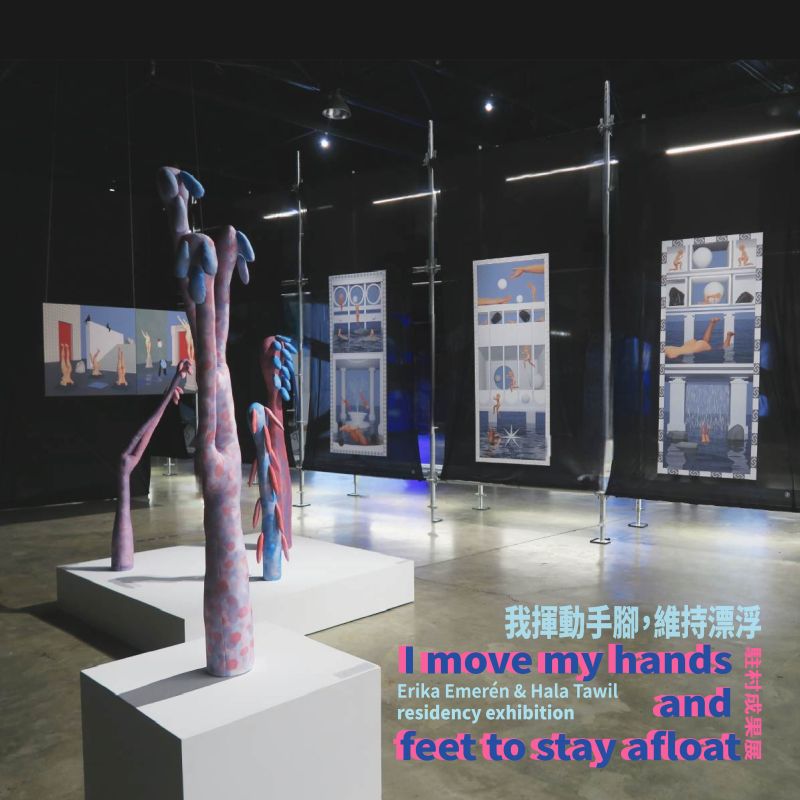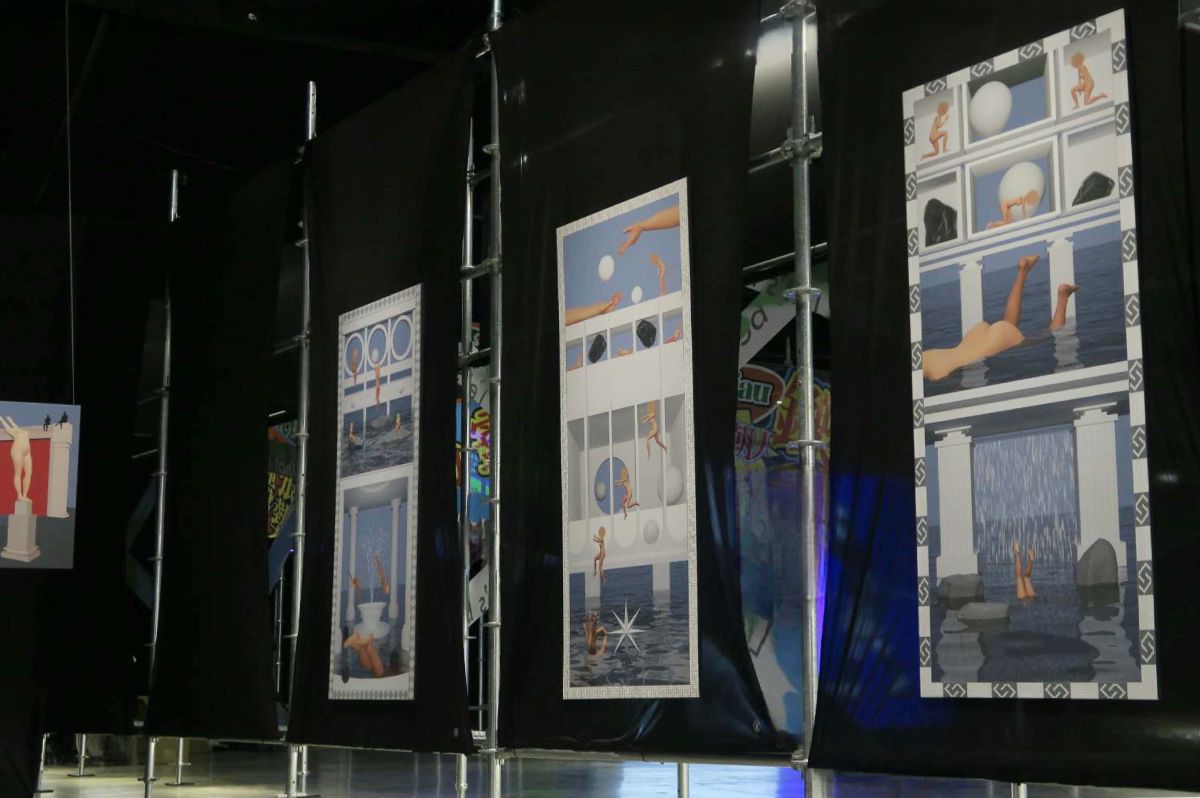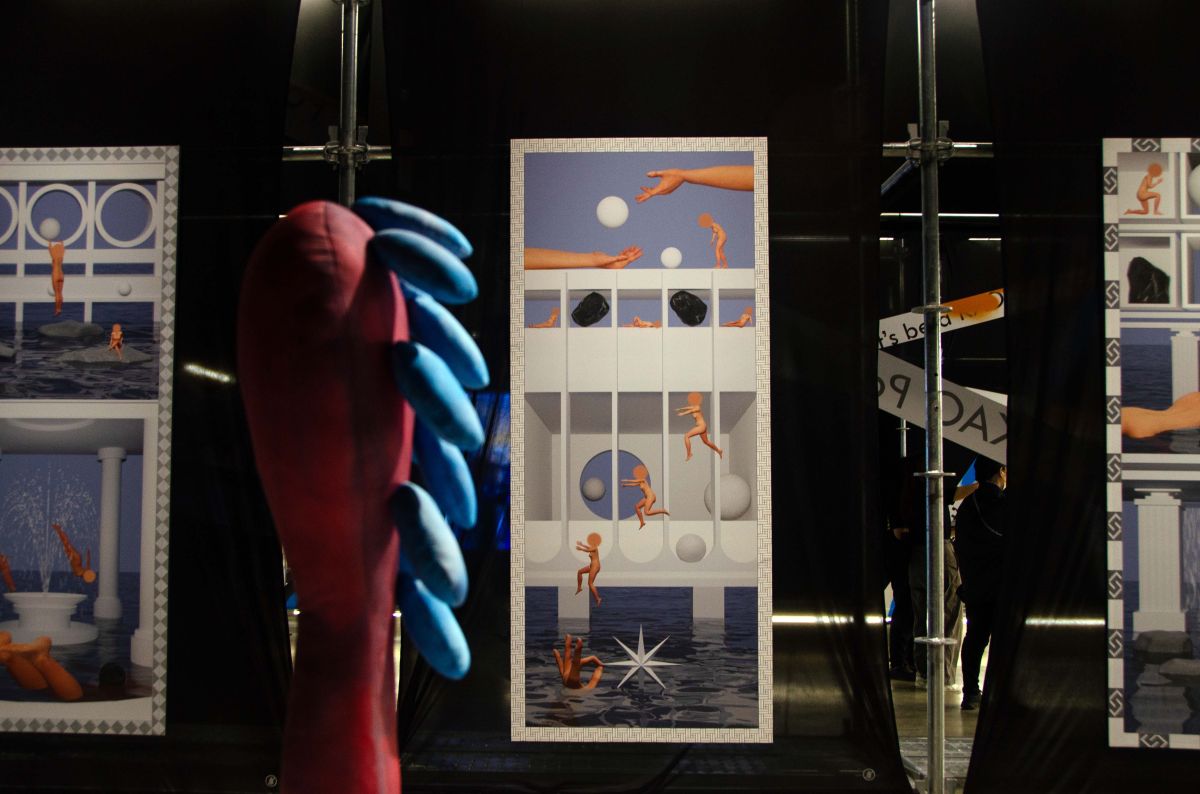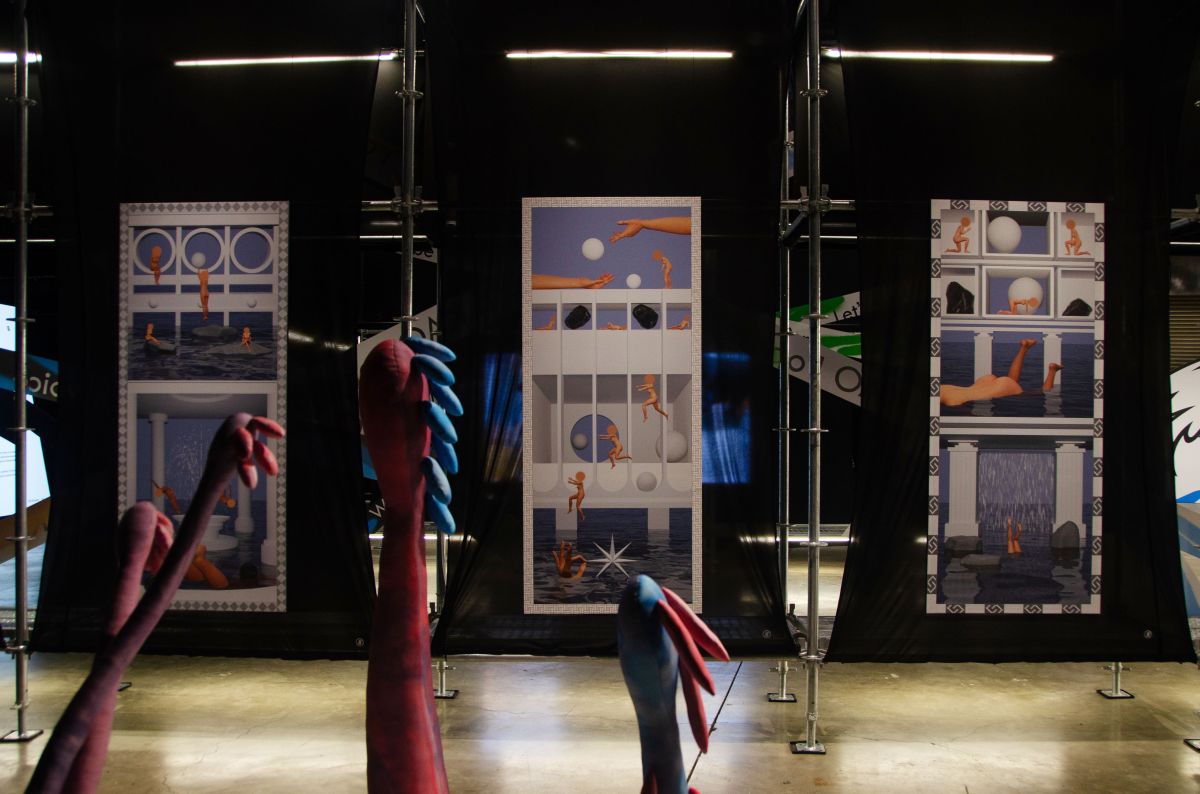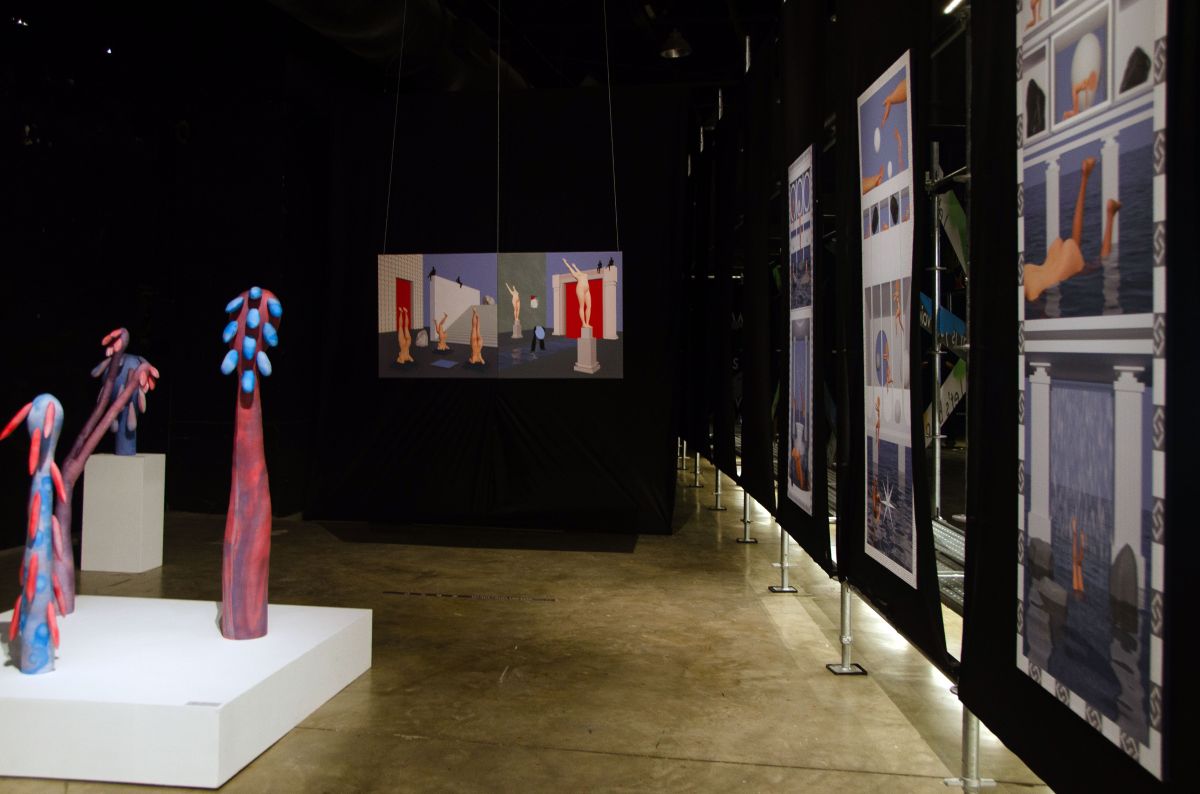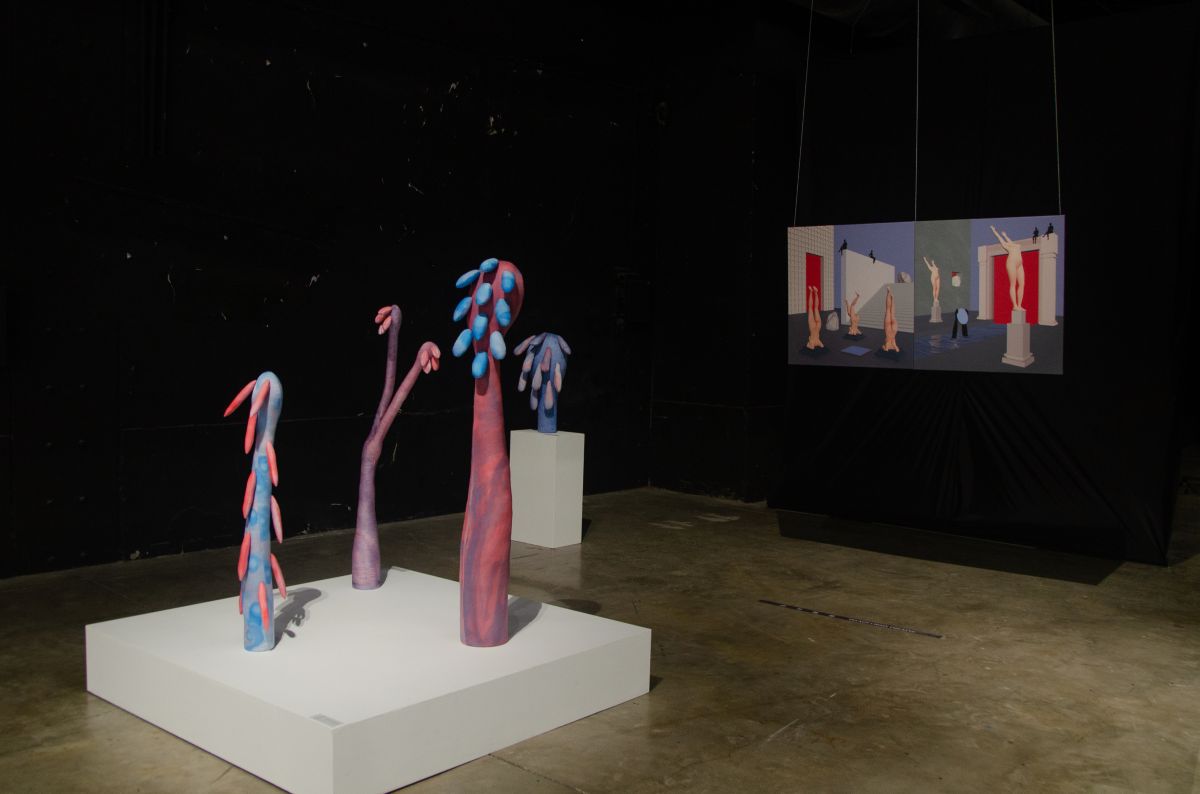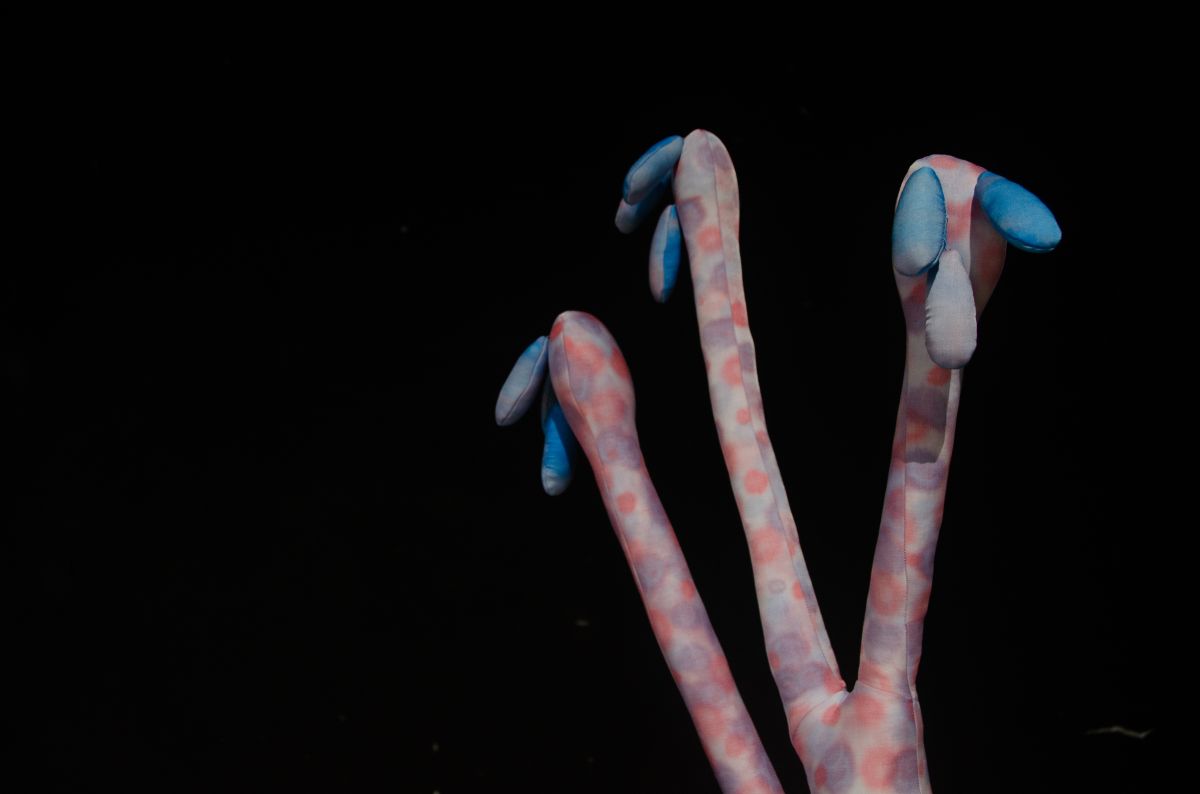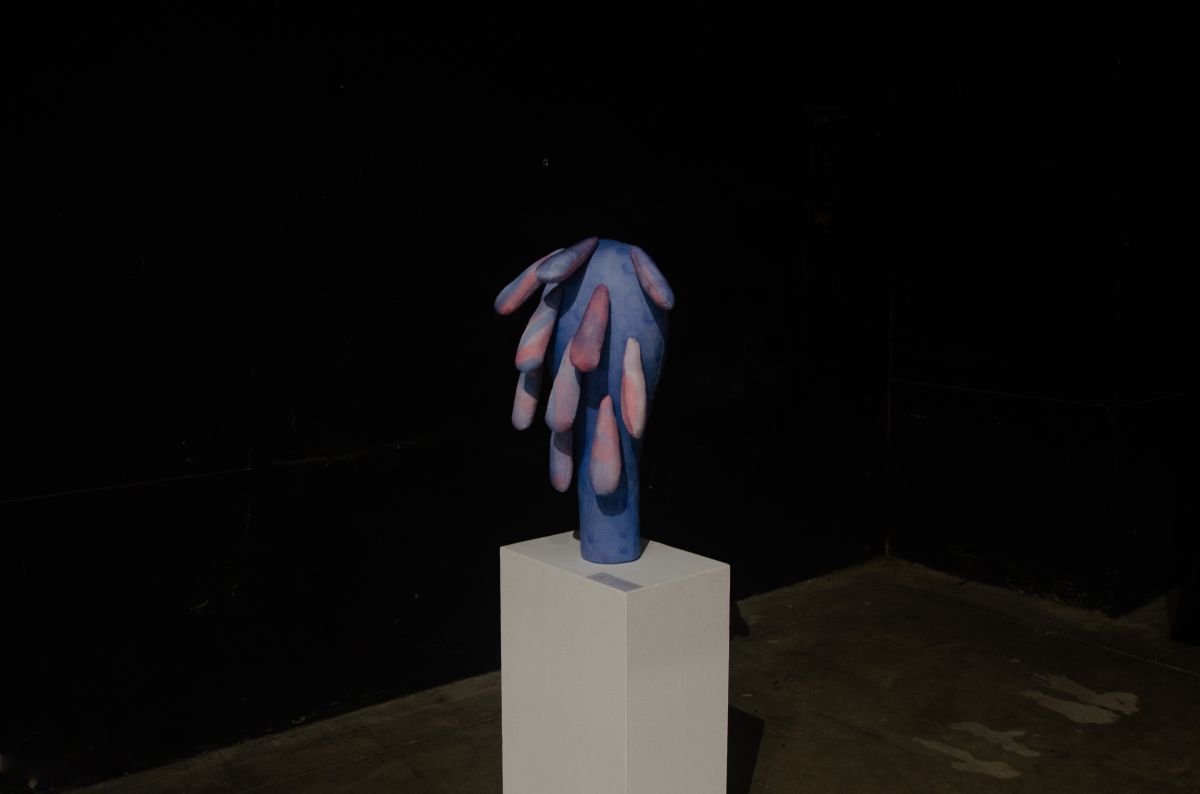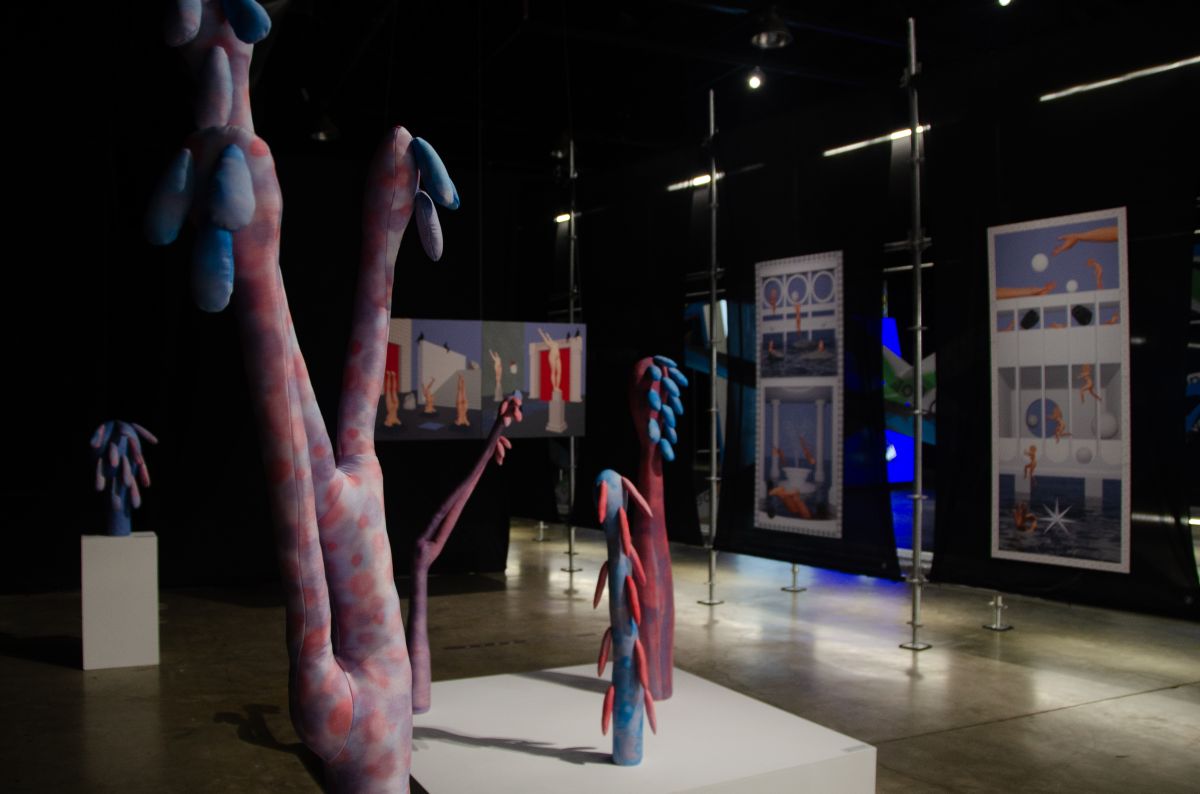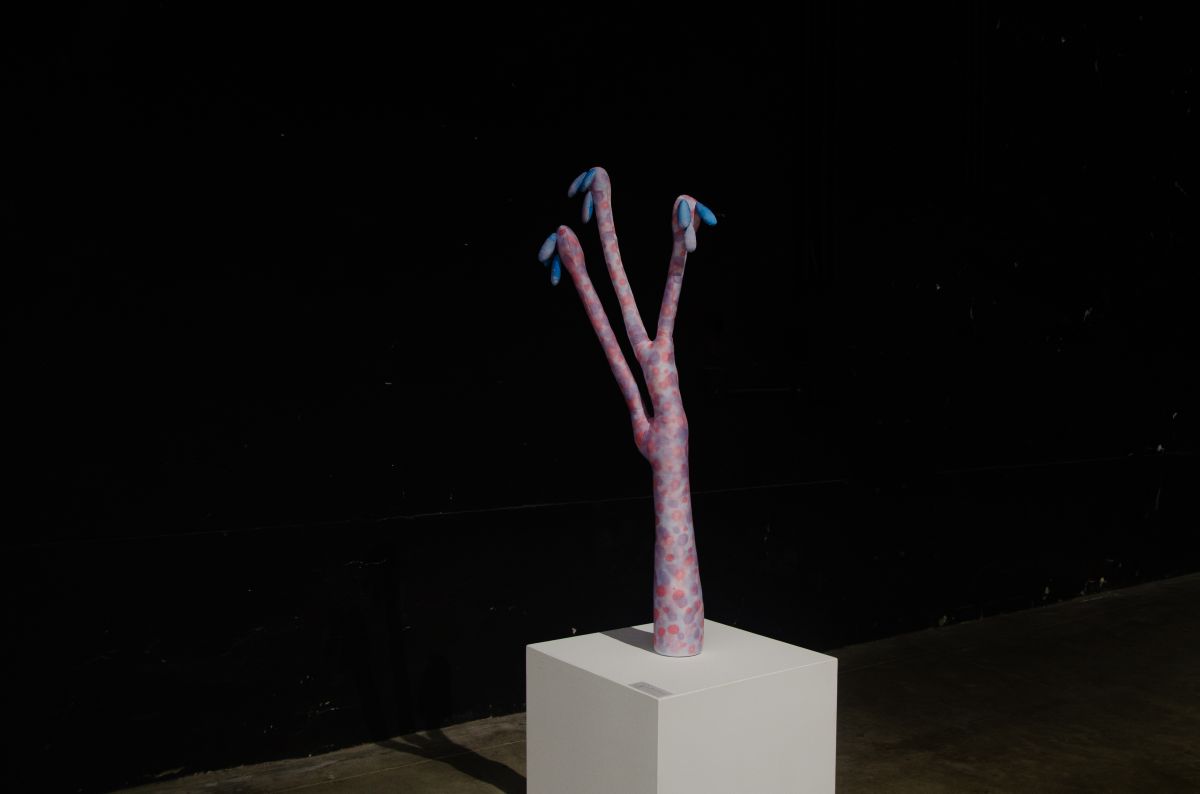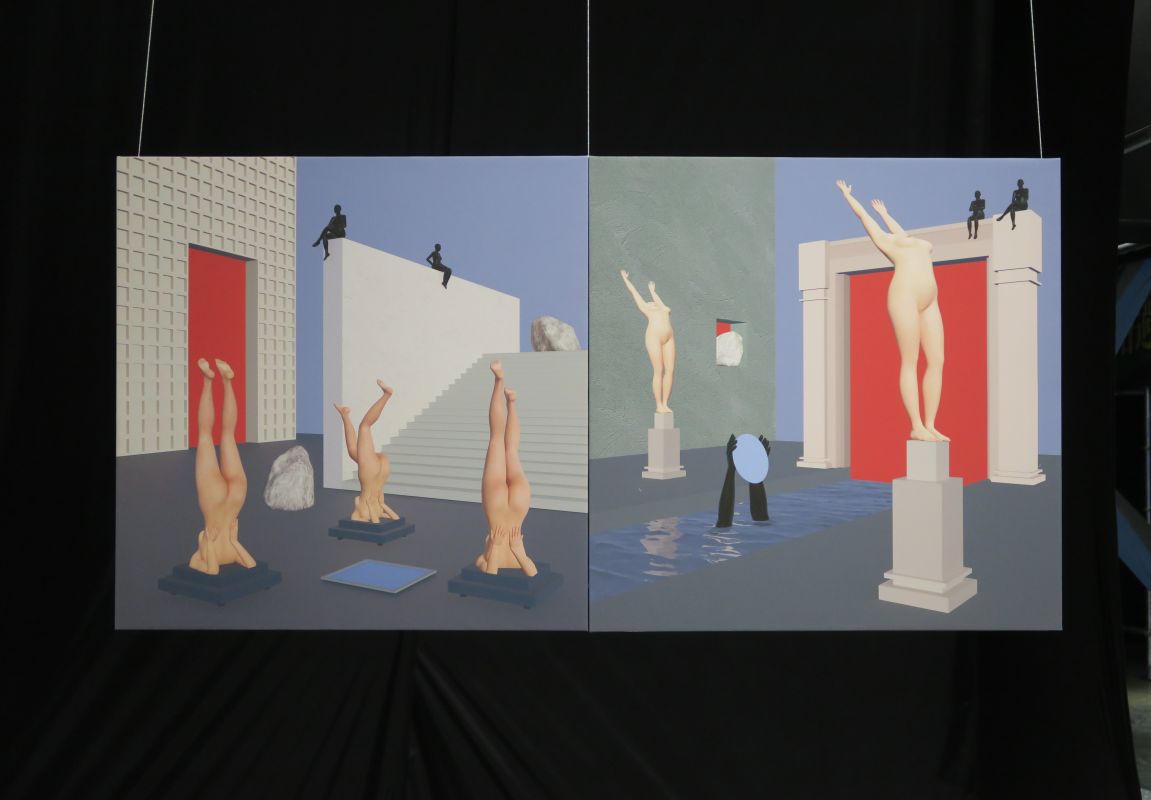Location: P2 Warehouse, Dayong Area, Pier-2 Art Center
Time: Mon.-Thu. 10:00~18:00; Fri.-Sun. 10:00~20:00
- Hala Tawil Artworks Introduction
The inspiration began with the ocean and our relationship to it. The sea is both contradictory and mysterious — terrifying in its vast unknown, yet deeply comforting. We rest, gather, and build our lives by the water. Why is it that something so powerful and unknowable can bring such calm at its edges? This question is at the core of my exploration.
In the three large-scale pieces, I seek to capture the tension between fear and release. The body balances cautiously on the water’s surface, then dives, falls, or floats — suggesting a presence beyond the human, something almost divine.
The two smaller works reflect submission and surrender to life. Bodies bend, lean, and yield, seemingly bowing to a greater force, while the smaller self quietly observes.
Architectural and visual elements in the works are drawn from Kaohsiung. I was drawn to the layered nature of the city — visible in its streets, parks, buildings, and structures. Even in intense heat or heavy rain, people express their humanity through decoration and detail.
The surreal compositions do not aim to tell specific stories or symbols, but to evoke an atmosphere — one that calls forth the unknown forces that quietly govern our lives.
Finally, this series was also shaped in dialogue with a sculptor Erika Emerén whose work also centers the body — though in a completely different, abstract manner. Presented side by side, our works highlight the tension between control and surrender.
- Erika Emerén Artworks Introduction
Before arriving in Kaohsiung, I had already decided to make the face the central focus of my work. I was deeply inspired by the visual language of Hala Tawil, whose work often features the body, yet never reveals the face. To me, the face is not a site for identification, but an undefined surface — a space of emotional intensity that resists being named.
As I added bud-like elements to the body, the face became obscured, yet something new emerged: a different form of emotional presence. This was not an erasure of identity, but the opening of an ambiguous, inhabitable space — one that invites expansion.
Working alongside Hala in Kaohsiung became a significant source of inspiration. The temples we visited — with their intricate ornamentation and repeated motifs — deeply influenced my visual vocabulary. I was particularly drawn to repetition, which carried both spiritual and aesthetic weight.
Water also permeated my creative process. The flow of the Love River, the humidity in the air, and the force of incoming typhoons all shaped a new approach to dyeing fabric. I no longer treated fabric as a canvas to illustrate, but allowed the pigments to move like watercolor, embracing fluidity and unpredictability. Using a dropper, I let the dye spread and pool like puddles, letting the fabric become on its own terms.
What began as a focused inquiry into the face organically evolved into a process that gave rise to five bodies, each bearing one or multiple faces.
It is never easy to capture the experience of a city through sculptural form. Kaohsiung is layered and diverse, and what I encountered was only its surface. But one thing I’m sure of — the rhythm of this city has entered my work and my way of making. Its movement, like moisture soaking into my pores, has quietly shaped the entire process.
